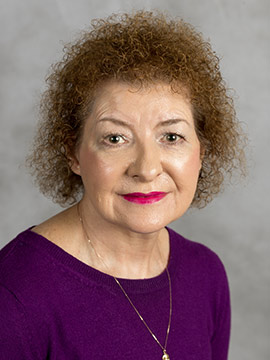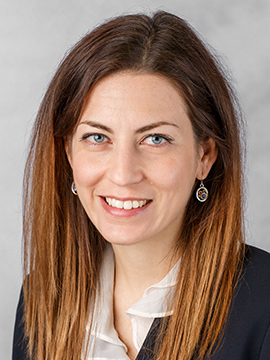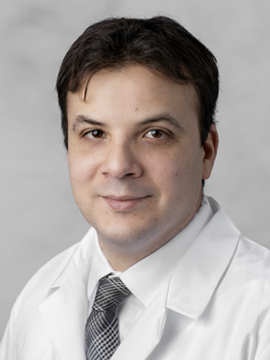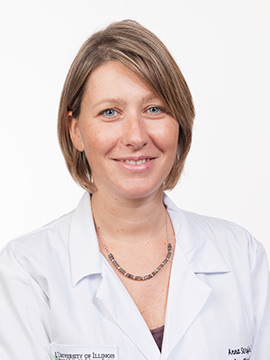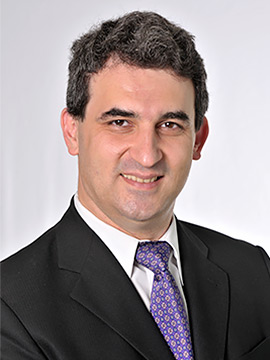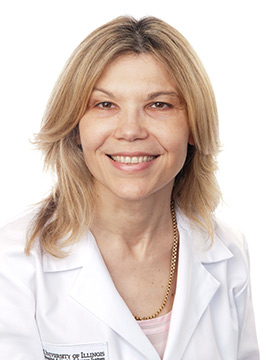Neurosurgery and Neurology
Neurological Conditions We Treat
- Amyotrophic Lateral Sclerosis (ALS)
- Brain Aneurysm
- Brain Tumors
- Concussion
- Endovascular Neurosurgery
- Epilepsy & Seizure Disorders
- Fibromuscular Dysplasia (FMD)
- Headache
- Mental Health
- Memory & Cognitive Disorders
- Multiple Sclerosis (MS)
- Muscular Dystrophy
- Myasthenia Gravis
- Neurology Rehabilitation
- Neurocutaneous Disorders
- Neuromuscular Disease
- Pain
- Spinal Cord Tumors
- Spine and Spinal Cord Disorders
- Stroke
Neurosurgery
Neurosurgery Team
Neurology Team
Neurology and Neurosurgery Patient Stories
Contact Us
Neurocutaneous Disorders
For more information
or to make an appointment,
call the Neuroscience Center
at 312.355.0510.
Neurocutaneous disorders are a group of diseases with characteristic skin and neurological findings. There are several neurocutaneous disorders including neurofibromatosis type I (NF1), neurofibromatosis type II (NF2), tuberous sclerosis, and Sturge-Weber syndrome.
Team of Specialists
Neurofibromatosis type I (NF1)
It is the most common neurocutaneous disorder with incidence 1:3000. Inheritance is an autosomal dominant pattern, but approximately half of NF1 cases result from a spontaneous mutation. The disorder is due to a mutation in the NF1 gene at chromosome 17q11 (neuraofibromin protein). Main characteristics of the disease are café au lait spots (more than 6, > 5 mm diameter), axillary freckling, neurofibromas; opticg lioma, Lisch nodules (iris hamartomas); osseous lesions (thin cortex, sphenoid dysplasia, scoliosis).
Diagnostic criteria for NF1 (need 2 of 7)
- Axillary/inguinal freckles
- Bone deform ties: sphenoid dysplasia, thinning of long bones
- Cafe au lait patches (Need six measuring 5 mm if prepubertal.5 mm if postpubertal)
- 1st Degree relative
- Eye findings: Lisch nodules (> 2)
- Fibromas (> 2 neurofibromas or 1 plexiform neurofibroma)
- Glioma of optic nerve
Neurofibromatosis type II (NF2)
NF2 disorder has incidence1:50,000. Inheritance is an autosomal dominant pattern with also de novo mutations of NF2 gene at chromosome 22q11 (merlin protein). It is characterized by acoustic neuromas, meningiomas, neurofibroma, glioma, schwannoma.
Diagnostic criteria for NF2 (only one criterion required)
- Bilateral acoustic neuroma
- Positive family history (parent, child or sib) and either unilateral acoustic neuroma or 1 of the following:
- neurofibroma, meningioma, glioma, schwannoma, or posterior capsular cataract (at young age)
Tuberous Sclerosis (TSC)
Tuberous sclerosis is the second most common neurocutaneous disorder with a prevalence of 1 per 6000 to 9000 individuals. The inheritance of TSC is as an autosomal dominant with 66% to 86% cases result from a spontaneous mutation. It is a disorder that can affect the brain, skin, kidneys, heart, and other organs. Two genes are responsible for tuberous sclerosis the TSC1 at chromosome 9q34.3; (hamartin protein), and TSC2 at cheromosome 16p13.3 (tuberin protein). Main characteristics are: ash-leaf spots, shagreen patches, café au lait spots, subependymal giant cell astrocytoma (SEGA), cortical tubers. adenoma sebaceum, subungual fibromas; epilepsy (infantile spasms, etc), mental retardation, intracranial calcifications; cardiac rhabdomyoma; renal anomalies
Sturge Weber syndrome
It is a sporadic disorder. The main characteristics of Sturge Weber disease are port-wine stain around the ophthalmic branch of the trigeminal nerve, vascular malformation involving the ipsilateral cerebral cortex. intracerebral calcifications, seizures, mental retardation, intracerebral calcifications





